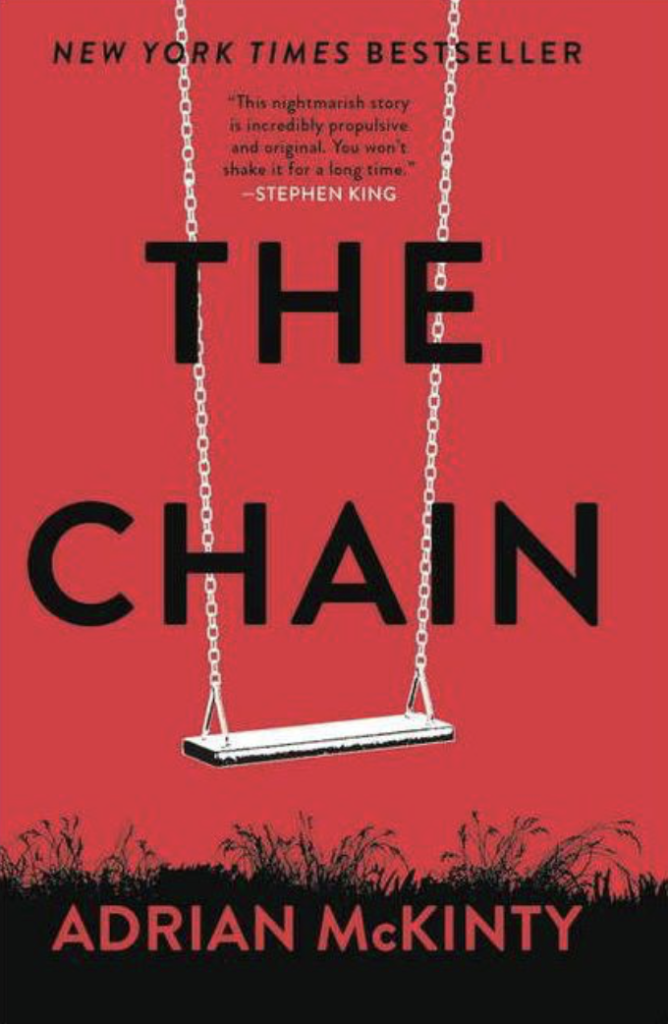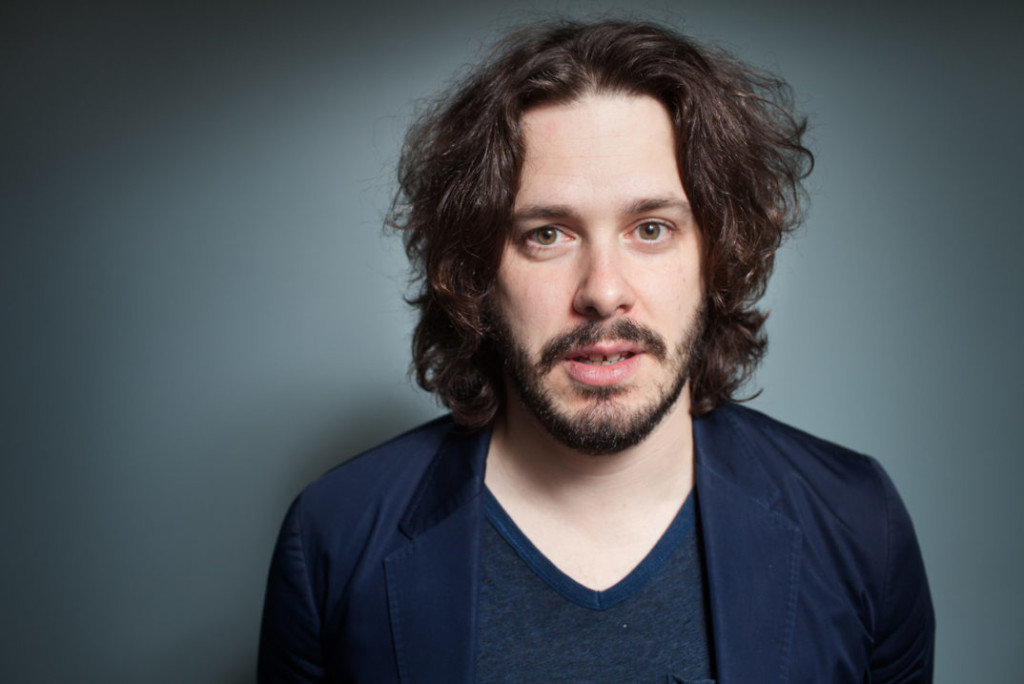A seven figure movie deal with Edgar Wright directing!
Genre: Thriller
Premise: A suburban mother’s life is upended when her daughter is kidnapped. But it’s the demand of the kidnapper that’s the real head-scratcher — to get her daughter back she must kidnap someone else’s child.
About: Today we’ve got a review of a high-profile project. This recent best-seller went up for a bidding war that Paramount won, paying seven figures for the movie rights. But what’s more impressive is that they somehow got high-profile and artistically demanding director Edgar Wright to helm the movie. Oh, and here’s another fun tidbit. The writer, Adrian McKinty, was an Uber driver. So the next time you’re feeling hopeless working in that mindless low-paying job you detest, remember that success is always just around the corner as long as you’re willing to work for it. And by work for it, I mean, MAKE SURE YOU’RE WRITING EVERY DAY.
Writer: Adrian McKinty
Details: 370 pages
Make good people do bad things.
Or make bad people do good things.
The contrast of either of those setups is going to yield strong results.
The Chain takes that first premise and jabs 5000 ml of horse steroids into it. Our heroine, Rachel, is the goodest of the good. A single mother who loves her daughter more than anything. And, oh, she’s a cancer survivor! How pure and lovable can one person get?
But today’s story tests the limits of suspension of disbelief.
You guys remember what that is, right? Everybody goes into a book or a screenplay or a movie understanding that what they’re watching isn’t real. We know, for example, that when Spider-Man is swinging from building to building in downtown Manhattan, that isn’t really happening. And yet we’re engaged. Yet we care. Yet we’re invested in how he’s going to stop the Vulture. That’s suspension of disbelief. It’s creating a, sort of, magical cloud around your story that’s convincing enough that, even though you know you’re watching something made-up, you still believe it’s real.
The Chain tries, at every turn, to obliterate that cloud. The aforementioned Rachel is minding her own business in suburbia when, one day, a woman calls her and tells her that she’s kidnapped Rachel’s 13 year old daughter, Kylie. She gives Rachel instructions. Send 25k to this bank account AND THEN go kidnap another child, after which you will convince their family to do the same. Fail to abide by the rules and your kid will be killed. We know this because every family has the ultimate motivation. If they don’t do what they’re told, their own kidnapped child will be killed. If you try to call the police or anyone not approved, they will kill you.
Rachel has become a link in The Chain, a sophisticated operation whereby the regular people are forced to do the kidnapping so the bad guys don’t have to. All they do is collect the money. The chain is everywhere. Always watching. On your phone, on your computer. The people you walk past at the bank could be part of the chain. So you must do what the chain tells you to do.
Rachel doesn’t have to be told twice. After she pays the ransom, she recruits her ex-husband’s brother, who used to be in the military, and the two research five candidate kids to kidnap. Rachel, who lives in a beautiful seaside summer town, recruits one of the empty houses to stuff the kidnapped kid in and off they go. But the kidnapping goes wrong and they’re forced to kidnap a sister of the target, who just happens to be a walking allergy. Get anything funky near her and she goes into convulsions. This isn’t going to be easy.
But through hard work and perseverance, they follow the chain’s rules and actually get Kylie back! As a bonus, Rachel and her ex’s brother fall in love. It seems like the nightmare is over. But guess what, we’re only at the midpoint!
In the second half of the book, we meet the chain’s weirdo CEOs, a couple of kooky twins, boy and girl, who grew up in a commune. We see how their bizarre childhood led to their idea for the chain. Meanwhile, Rachel is having nightmares and Kylie is googling how to kill herself. Rachel realizes that the only way these things go away is if they take down the chain!
Through some reconnaissance, Rachel and Paul find an old victim of the chain, a mathematician, who’s just like Rachel. The nightmares won’t end until he gets justice. So the three of them design a program to find the chain. And after much research, they learn that the chainys are not far from here. Off they go to confront the bastards. But everything is thrown for a loop when they realize that they’ve got Kylie once again!
The Chain is kooky sillyville 9000 for the majority of its running time.
Like I said, it’s practically begging you to point out the holes.
The real problem is that The Chain’s rules are too complicated.
The more moving parts there are to your story rules, the more work you’re going to have to do plugging the plot holes up. Take Double Jeopardy, for example. It’s by no means a great movie. But the rules were insanely simple. You can’t be convicted of the same murder twice. Which means you’re allowed to kill the person a second time and get away with it.
The Chain is way way way way way more complicated. Your kid is kidnapped and to get them back, you need to kidnap someone else and pay a ransom. Then convince someone else to kidnap someone else and pay a ransom. Only then do you get your kid back. But then you still keep the kid you’ve kidnapped until the next family sets up the next family in the chain, I think. Even though you already have your kid back?
And, oh yeah, if someone screws up three links down the chain long after you’re finished, you’re brought back into the chain and must perform random jobs like convincing other people not to call the cops or else The Chain people will kill you and your family. The lesson here is to keep the rules of your concept simple. Otherwise you’re going to be spending endless nights trying to cobble together a cohesive storyline.
Where I do give credit to McKinty is that he doesn’t end the story where we think he will. I was genuinely surprised that they got the daughter back by the midpoint. It was then that I realized this wasn’t about this family’s ordeal. The concept was “the chain.” So McKinty wanted to explore the chain and how it originated and how it worked. And I admit I was into it enough that I wanted Rachel to take them down. They were such evil people that I had to see them get served a heaping of justice.
Unfortunately, the bad guys turned out to be weak sauce. It was basically two weirdo kids (or kids-turned-adults). They weren’t menacing at all. I don’t know if that was the point. They created a facade where they were this powerful organization when, in reality, they were just a couple of socially awkward 20-somethings. But that begged several other questions, such as how they had this endless network of people willing to do highly criminal things at the drop of a hat. Either you have to be a legit huge operation or you have to convince me how a couple of doofuses pulled this off.
I’m curious why Edgar Wright signed onto this. Here’s a guy who worked on Ant-Man for a decade but dramatically marched out due to “artistic integrity” yet he’s directing a movie about a nearly impossible to buy into kidnapping chain?
I’m having trouble wrapping my head around this project. Is it a throwback 1990s high-concept thriller? Is it trying to be the next Gone Girl?
It’s mildly entertaining but it’s so fluffy and filled with plot holes that it’s hard for me to imagine any sophisticated filmmaker wanting to do this. I’m seeing this more as a “debuts #5 on Netflix’s Top 10 List,” right behind “Drunk Parents.” I guess we’ll have to wait and see.
[ ] What the hell did I just read?
[x] wasn’t for me
[ ] worth the read
[ ] impressive
[ ] genius
What I learned: Padding your stats. In sports, there’s something known as padding your stats. It’s when you take extra shots or throw extra passes in the hopes of improving your yardage, assists, goals, points, despite the fact that the game has already been decided. On my football team, the Bears, our lousy QB, Mitch Trubisky routinely throws 50 yard passes at the end of already decided games in the hopes of padding up his stats and looking better than he actually is. I see writers doing this as well. They add things onto their characters because they think it’s going to make them look better or more complex or more interesting, despite the fact that it doesn’t affect the story at all. There’s this whole character backstory here where Rachel is a cancer survivor and she’s worried the cancer has come back that has ABSOLUTELY NOTHING to do with the story. The novel didn’t need it. But a writer was trying to pad their character, make them more “interesting” and “complex.” Avoid this if you can. The only time you should add anything significant to your character is if it’s going to be relevant to the story.



